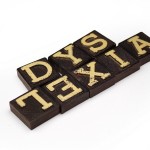What Is Dyslexia ?
 Dyslexia refers to the problem of the child in reading and recognizing alphabets and sounds. They think visually so have problems in understanding letters, numbers, symbols or written words. Until the children reach school, it’s hard to identify the existence of the problem. When they start schooling it comes to light. Generally dyslexia is seen more in boys than in girls. It’s in 4:1 ratio.
Dyslexia refers to the problem of the child in reading and recognizing alphabets and sounds. They think visually so have problems in understanding letters, numbers, symbols or written words. Until the children reach school, it’s hard to identify the existence of the problem. When they start schooling it comes to light. Generally dyslexia is seen more in boys than in girls. It’s in 4:1 ratio.
But dyslexic children are not a cause to worry because if the condition is identified and treated, they can compete with the rest of the folks. There are lots of successful people who have been dyslexic in their childhood like business tycoon Richard Branson, actor Tom Cruise, Susan Hampshire. Dyslexia children are gifted children. Many of them have above average IQs and most of them have average intelligence. By no means should they be classified as “dumb” or “dud”.
Like in all disorders and disability, if identified early and treated the complications can be reduced. With proper treatment most of them get over their shortcomings but there are few exceptions as always who don’t overcome all of them. Many of these came be attributed to the low self confidence and self esteem caused by the wrong teaching methodologies used for dyslexic child and also teachers not realizing the fact that they are teaching with dyslexic children.
Dyslexia Signs and Symptoms
In the preschool years dyslexia symptoms in children are hard to determine whether it’s the malnutrition or dyslexia that causes the problem. However if there is a history of dyslexia in the family or if the parents are not happy with the child’s progress then he/she has to be tested for dyslexia.
- Late walking and talking: Normally kids begin to start walking between the age of one and two. Speech may take a little longer however by three they should start to talk. Some dyslexic children drag themselves on their tummies or wriggle on their bottom not even crawl.
- Deficiency in coordination skills: This cannot be considered as a standalone symptom but if there are others then these can be checking this as well. The kids would find it difficult to coordinate the hands and eyes and body as the same time. They have problems in motor skills, learning to eat on their own and play
- Unable to button their dress or tie laces, find it’s difficult to learn to ride a bike, swim etc: All children will face these problems initially but a normal child will learn with practice and a dyslexic child would still struggle. Some of them don’t masters these at all
- Unclear Speech: As the children grow older, they automatically lose their baby tongue and start talking clearly. But dyslexic child continues to speak un-clearly for longer period of time and also get confused with words and substitute them. For example, ‘hopsital’ for hospital and ‘tebby-dare’ for teddy-bear
- Learning to read the clock: As the children grow they learn how to make out the time from the clock but it’s always a challenge for dyslexic child.
- Genetic: Dyslexia is genetic. If there are relatives to the child who are dyslexic, the child has chances of being one.
- Problems with concentration and memory: The dyslexic child has short term memory only so they would have to concentrate harder to understand and remember things. This would tire them out and ultimately distract them.
- Problems with sequence: Dyslexic child cannot put things in the right order nor do they remember the sequence properly. They cannot do actions to the rhymes in sequence with the rhythm or remember rhyming words like cat, rat, mat etc
- Left handed or ambidextrous: Most dyslexic children are left handed or comfortably use both hands. But this alone is not a symptom by itself.
- Writing and drawing: The dyslexic children tend to write alphabets backwards, don’t write legibly or write and draw from right to left. They may have difficulty in holding the pencil/crayons. If these don’t change with repeated practice, then can be counted as sign of dyslexia.